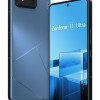Review: Nokia 3220
Screen
The screen is the typical 128 x 128 Series 40 display. Nokia continues to experiment with different screen technologies, in what is probably an attempt to balance legibility with power consumption. The 3220 seems to have finally struck that balance. The screen is easy to read indoors, and better outdoors than most other Nokia handsets - even more expensive models like the 6230. The colors are still somewhat washed out in bright sunlight, but they are no longer completely washed away.
Signal
The antenna is excellent, especially for an integrated model, and the phone gets reception even in many problem areas. The reception is not better than expected in dead zones, however it is often sufficient to make a call. The signal strength indicator is more accurate than most as well, giving an accurate representation of how signal will affect call quality.
Sound
This phone rings very loudly, we never had to turn the ringing volume louder than 4 out of 7. The 3220's speaker is very close to the top edge of the phone, making it difficult to naturally place the speaker in your ear by feel. Even when the phone is pulled down the speaker is not very loud in noisy environments.
The poor speaker placement and volume are compounded by the lack of external volume controls. There are no volume buttons on the 3220, instead, as on Nokia Series 60 phones, in-call volume is adjusted by pressing left or right on the D-Pad during a call. Ringer volume must be adjusted from within the settings menu.
The speakerphone also suffers from the weaknesses, however it is much easier to adjust the volume using the D-Pad when you are looking at the phone. The microphone performed much better than the speaker did.
Battery
In average use the battery lasts 3-4 days of making calls, sending texts, taking pictures and general fiddling around.


 Nokia Debuts New Light-Up Camera Phone
Nokia Debuts New Light-Up Camera Phone
 Asus Goes Big with Zenfone 11 Ultra
Asus Goes Big with Zenfone 11 Ultra
 Nokia 3220
Nokia 3220



